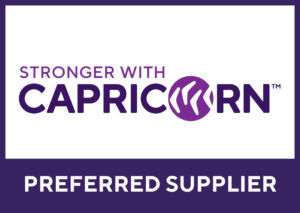How Can We Help?
Entering Accounts Payable in MYOB
Instructions to enter Accounts Payable
Version Control:
| Version No. | Date | Preparer | Reviewer | Approver |
| 1.0 | 05/07/2019 | Sunitha Bethu | ||
To Pay Bills
- Go to the Purchases command centre and click Pay Bills. The Pay Bills window appears.

- Select how the payment is to be made.
- If you’re paying the supplier electronically—that is, if you will be generating an electronic payment file for this payment—select Electronic Payments option. Learn how to set up electronic payments.
- If you’re paying the supplier by some other means—such as by cash, cheque, credit card or internet banking, select the Pay from Account option and enter an account in the adjacent field. This will default to the linked account you’ve set as your Bank Account for Paying Bills, but you can change it if the payment is coming from another account.
- In the Supplier field, enter the supplier’s name. If you have an outstanding debit with this supplier, a message may appear. You will have the opportunity to settle the debit now, or at a later date. (See Settling supplier debits).
- In the Amount field, type the total amount paid.
- Change the memo and payment date if necessary.
- In the scrolling list in the bottom half of the window, indicate which purchases are covered by the payment by entering amounts in the Amount Applied column.

| A. Pay All: If you’re settling your account in full, click Pay All. The total payment amount appears in the Amount field and the individual payment amounts are applied to each open purchase. |
| B. Discount: If you’re taking an early-payment discount for a purchase, assign the discount to the appropriate purchase in this column. Note that you cannot assign a discount to a purchase that you are not settling in full. If this is the case and you want to record a discount that the supplier has given you, create a supplier debit. See Settling supplier debits. |
| C. Amount Applied: Enter how much of the payment you want to apply to each purchase in this column. |
| D. Finance Charge: If part of the payment was used to pay finance charges, type the finance charge amount here. |
| E. Out Of Balance: The Out of Balance amount must be zero before you can record the transaction. This field will show an out of balance amount if there is any variance between values in the Total Paid and Amount fields. If you have out of balance amounts, correct the amounts in the Amount Applied and Finance Charge fields. |
If you’ve overpaid a supplier, you should still enter the amount paid. The full payment should be entered in the Amount Paid field and in the Amount Applied column in the scrolling list. When you record the payment, a debit note for the overpaid amount is created automatically. This can either be settled as a refund or applied to a future purchase. For more information, see Settling supplier debits.
- If you want to print or email a remittance advice later, select an option from the Remittance Advice Delivery Status list.
- If you’re recording a cheque payment and the cheque has already been written, or if you are recording a transaction that doesn’t require a printed cheque (such as a petty-cash payment or internet payment), select the ChequeAlready Printed option.
- If you want to print a cheque or remittance advice now, click Print and select the form type you want to print, or select to preview the form before printing it. Note that the payment is recorded before it is printed or previewed.
- Click Record.
If you’ve recorded a bill payment that you want to pay electronically, you can prepare the electronic payment file for your bank to process. See Electronic payments.

